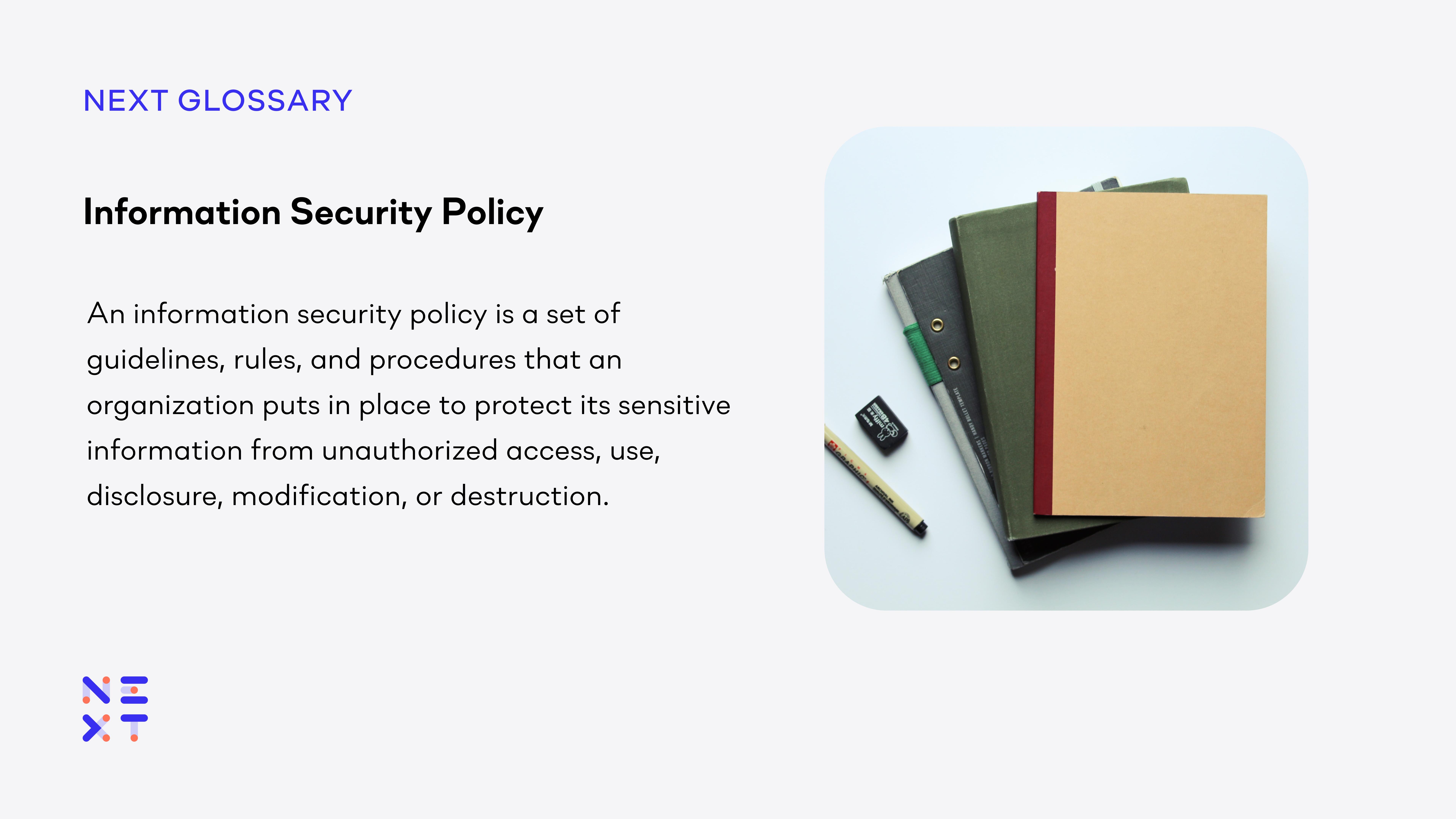An Information Security Policy is a comprehensive document that outlines an organization's guidelines, procedures, and best practices for ensuring the confidentiality, integrity, and availability of sensitive information.
It serves as a foundational document that establishes the framework for protecting data, mitigating risks, and managing insider threats.

Here are some reasons why an Information Security Policy is important in DLP and insider risk management:
- Establishing a Security Framework:
An Information Security Policy provides a framework for implementing security measures and controls to protect sensitive data. It sets the foundation for an organization's security posture, defining the objectives, principles, and responsibilities related to information security. The policy helps create a consistent and structured approach to managing DLP and insider risk.
- Protecting Sensitive Information:
The primary purpose of an Information Security Policy is to protect sensitive information from unauthorized access, disclosure, alteration, or destruction. It establishes guidelines for data classification, access controls, encryption, data handling, and storage to ensure that sensitive data is handled appropriately and protected throughout its lifecycle.
- Compliance with Regulations:
Compliance with industry-specific regulations and data protection laws is crucial for organizations. An Information Security Policy ensures that security practices align with applicable regulations, such as the General Data Protection Regulation (GDPR), Health Insurance Portability and Accountability Act (HIPAA), or Payment Card Industry Data Security Standard (PCI DSS). It helps organizations meet their legal obligations and avoid penalties associated with non-compliance.
- Mitigating Insider Risks:
Insider threats pose a significant risk to organizations. An Information Security Policy addresses insider risk management by defining clear guidelines for employee responsibilities, acceptable use of technology resources, access controls, and incident reporting procedures. It helps create awareness among employees about the potential risks and consequences of insider threats, reducing the likelihood of policy violations or malicious activities.
- Data Loss Prevention:
An effective Information Security Policy includes provisions for DLP measures. It outlines data handling procedures, controls for data transfer and sharing, restrictions on removable media usage, and encryption requirements. The policy helps prevent data breaches, unauthorized data access, or accidental data leakage by establishing guidelines and controls to monitor, protect, and prevent the loss of sensitive data.
- Risk Management:
The Information Security Policy establishes a risk management framework that helps identify, assess, and mitigate risks related to information security. It outlines risk assessment methodologies, risk treatment strategies, and incident response procedures. By incorporating risk management practices into the policy, organizations can proactively address security vulnerabilities, minimize risks, and respond effectively to security incidents.
- Employee Awareness and Training:
An Information Security Policy serves as a communication tool to educate employees about security best practices, their responsibilities, and the importance of information security. It promotes security awareness and a culture of data protection by providing guidelines on password management, social engineering awareness, phishing prevention, and reporting suspicious activities. Regular training programs based on the policy help employees understand their role in maintaining information security.
- Continual Improvement:
An Information Security Policy is a living document that evolves alongside emerging threats, technology advancements, and changes in business requirements. It establishes a foundation for continual improvement by mandating periodic policy reviews, risk assessments, and updates to reflect changes in the threat landscape or regulatory environment. This ensures that security measures and controls remain relevant and effective over time.
Relevance to Insider Risk and Data Protection
An Information Security Policy is critical for establishing a comprehensive framework for protecting sensitive information, mitigating risks, and managing insider threats. It promotes a culture of security awareness, compliance with regulations, and the adoption of best practices to safeguard data.
By implementing and adhering to an effective Information Security Policy, organizations can strengthen their overall security posture, protect sensitive data, and mitigate the risks associated with insider threats and data loss.

